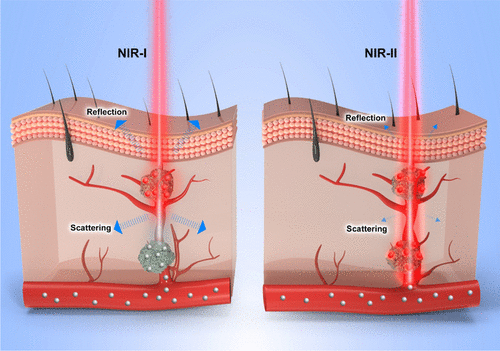当前位置:
X-MOL 学术
›
Bioconjugate Chem.
›
论文详情
Our official English website, www.x-mol.net, welcomes your
feedback! (Note: you will need to create a separate account there.)
Activatable Fluorescence Probes for "Turn-On" and Ratiometric Biosensing and Bioimaging: From NIR-I to NIR-II.
Bioconjugate Chemistry ( IF 4.0 ) Pub Date : 2020-01-14 , DOI: 10.1021/acs.bioconjchem.9b00734 Chuan Chen 1 , Rui Tian 2 , Yun Zeng 1 , Chengchao Chu 2 , Gang Liu 2
Bioconjugate Chemistry ( IF 4.0 ) Pub Date : 2020-01-14 , DOI: 10.1021/acs.bioconjchem.9b00734 Chuan Chen 1 , Rui Tian 2 , Yun Zeng 1 , Chengchao Chu 2 , Gang Liu 2
Affiliation

|
The greatest advantage of activatable fluorescence probes (AFPs) is the inherent responsiveness to manipulate spectroscopic properties by chemical/physical interactions with the biological analytes/microenvironmental factors. As alternatives to "always-on" fluorescence probes, AFPs in the first near-infrared (NIR-I) window expanded dramatically over the past decade and served as powerful tools in fluorescence biosensing and bioimaging. Benefiting from the deep tissue penetration, minimal tissue damage, and negligible background signal within longer wavelength, recent progress of fluorescent materials in the second near-infrared (NIR-II) window has been creating vast new opportunities in developing AFPs. Here, we review the current role of AFPs in biosensing and bioimaging, with emphasis on NIR-II AFPs developed for biomedical applications. The challenges and prospects of AFPs are also discussed by considering the clinical translation from bench to bedside.
中文翻译:

用于“开启”和比例式生物传感和生物成像的可激活荧光探针:从NIR-I到NIR-II。
可激活的荧光探针(AFP)的最大优点是通过与生物分析物/微环境因素的化学/物理相互作用来操纵光谱特性的固有响应能力。作为“永远在线”荧光探针的替代品,在过去的十年中,第一个近红外(NIR-1)窗口中的AFP急剧扩展,并成为荧光生物传感和生物成像的强大工具。得益于深层组织穿透,最小的组织损伤以及更长波长内可忽略的背景信号,第二近红外(NIR-II)窗口中荧光材料的最新进展为开发AFP创造了巨大的新机会。在这里,我们回顾了AFP在生物传感和生物成像中的当前作用,重点是为生物医学应用开发的NIR-II AFP。还讨论了AFP的挑战和前景,并考虑了从实验台到床边的临床转换。
更新日期:2020-01-29
中文翻译:

用于“开启”和比例式生物传感和生物成像的可激活荧光探针:从NIR-I到NIR-II。
可激活的荧光探针(AFP)的最大优点是通过与生物分析物/微环境因素的化学/物理相互作用来操纵光谱特性的固有响应能力。作为“永远在线”荧光探针的替代品,在过去的十年中,第一个近红外(NIR-1)窗口中的AFP急剧扩展,并成为荧光生物传感和生物成像的强大工具。得益于深层组织穿透,最小的组织损伤以及更长波长内可忽略的背景信号,第二近红外(NIR-II)窗口中荧光材料的最新进展为开发AFP创造了巨大的新机会。在这里,我们回顾了AFP在生物传感和生物成像中的当前作用,重点是为生物医学应用开发的NIR-II AFP。还讨论了AFP的挑战和前景,并考虑了从实验台到床边的临床转换。











































 京公网安备 11010802027423号
京公网安备 11010802027423号